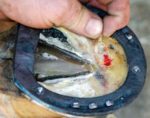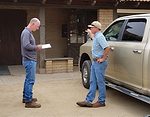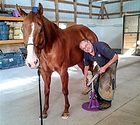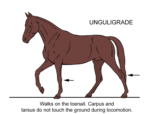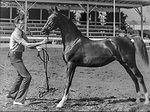Advertise Follow Us
American Farriers Journal
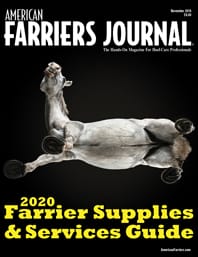
View Archived Issues
November 2019
Volume: 45
Edition: 7
American Farriers Journal is the “hands-on” magazine for professional farriers, equine veterinarians and horse care product and service buyers.
-
Table Of Contents
Table Of Contents
Results from Our Equine Lameness Survey
The results from an exclusive American Farriers Journal on hoof-care and lameness show farriers’ experiences in encountering these casesRead MoreHow to Avoid Debt in a Farrier Practice
California farrier shares tips to dodge financial problemsRead MoreMobile Payment Services are an Alternative to Cash and Check
Venmo, Zelle and PayPal are among the options hoof-care clients prefer as alternatives to traditional payment typesRead MorePrice Strategies for New and Reset Horseshoes
Analyze your business and clientele to choose the best practiceRead MoreIndiana farrier Cody Bogard shares his strategy for increasing hoof-care clients
Hiring a dedicated marketing person lets farrier focus on the equine foot while growing his businessRead MoreHow to Answer the Most Common Client Questions
Stay positive in how you respond to clients to provide better customer serviceRead MoreHow A Farrier Rig Can Help You
Manufacturers offer new ideas and tips for more efficient use of mobile work stationsRead More8 Tips to Improve Your Efficiency
Maximize your time investment in each horse with a few simple stepsRead MoreKeys to Successfully Work with Veterinarians
To help horses, both the farrier and veterinarian must recognize specific areas of responsibility and have open communicationRead MoreChanging Your Farrier Practice
Ohio farrier extends his career in spite of arthritis by transitioning to trims onlyRead MoreEquine Reciprocating Systems: Interosseous Muscles to the Suspensory Apparatus
In this second in a series, Dr. Deb Bennet continues a discussion of the horse’s forefoot becoming a single digit.Read MoreIn MemoriamHall of Fame Farrier Gordon Haight ‘Never stop learning’
American Saddlebred farrier’s legacy lives on with those he mentoredRead More -
Featured Articles
Featured Articles
Results from Our Equine Lameness Survey
The results from an exclusive American Farriers Journal on hoof-care and lameness show farriers’ experiences in encountering these casesRead MorePrice Strategies for New and Reset Horseshoes
Analyze your business and clientele to choose the best practiceRead MoreKeys to Successfully Work with Veterinarians
To help horses, both the farrier and veterinarian must recognize specific areas of responsibility and have open communicationRead More - Digital Edition
-
Online Extras
Online Extras


